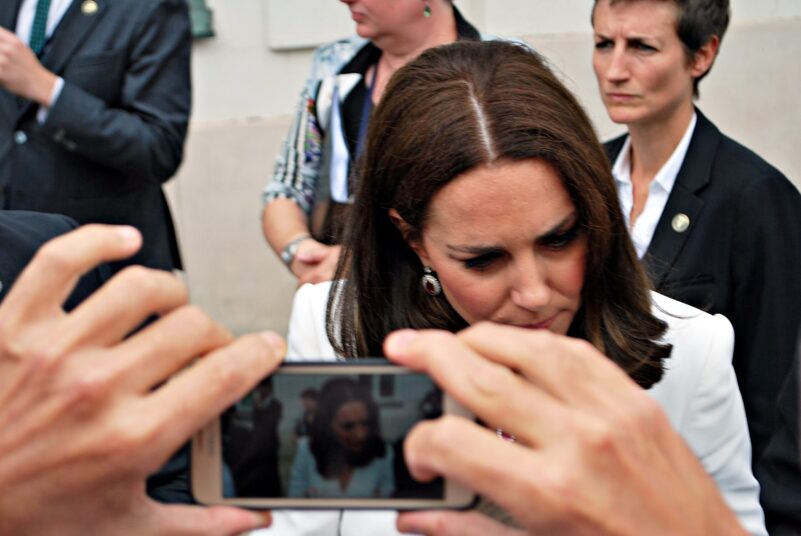By now most of us have heard about the latest buzz involving Princess Catherine of Wales and a certain ‘manipulated’ photo by Buckingham Palace. This story isn’t just about royal drama; it’s a fascinating peek into the ‘normal but not always useful’ workings of our ‘social’ human brain.
Why your brain loves a good story
The human brain has a social side – it’s a social butterfly! Always out and about looking for opportunities to connect with and interpret the human world. When your brain isn’t provided with the whole picture, it starts crafting stories, and indeed, it loves a juicy, dramatic one! It’s like a built-in soap opera scriptwriter and it’s how your brain seeks to make sense of the world in the absence of important information. In primitive times, imagining and acting upon the worst-case scenarios (like a saber-toothed tiger behind every bush) kept us alive. Fast forward to 2024, and this ‘normal but not always useful’ tendency is making us jump to some pretty wild conclusions.
The royal photo fiasco
The Princess Catherine photo that set tongues wagging is a perfect and recent, but not uncommon example. With little information on hand, people filled in the blanks with speculations, conspiracy theories, and a whole lot of drama. It’s like our brains saw a puzzle with missing pieces and decided, “Hey, let’s make this more interesting!” because the human brain gets bored easily and so it loves novelty – something new and energising to give it’s attention to!
The media’s spice mix
Of course, it’s getting more and more difficult for news companies to sell news. The competition to be seen as leading or ‘breaking’ the story is intense – not just amongst professional news outlets but influencers and other individuals competing for attention and their five minutes of fame.
Journalists and influencers can either be the voice of reason or the fuel to the fire. What they know is that the more dramatic and fanciful; the more mystery or fuss the reporting creates, the more it will draw us all in. And many humans non-consciously fall prey. The motivation for journalists and influencers to capitalise on this brain tendency won’t stop. Only we can halt the train.
Media and tabloids have an agenda and know that your brain has a drama-loving side and they feed it with, “Bored? Want a distraction? We’ve got just the thing for you!”
The social brain at work
And people in the workplace are no different. We all have an agenda and consciously and non-consciously use the social brain to advance it.
Many of our modern-day issues – mental well-being, motivation, relationship issues, and poor attitude or work behaviour – can be traced back to poor self-regulation of the social brain.
As always, whether it be in your home, your workplace, or in the school yard or community, your ability to manage your own thinking and help others to self-regulate theirs is key to a better workplace and lived experience.
Developing your leaders and your team (and your kids*) to be ‘better at being human’ – that is, how to think about and process the world around them – is now more important than investing in technical and theoretical training because without the former, the rest is compromised at best, and wasted at worst.
Put the fire out instead of fuelling it
So, here’s the thing? If we stopped giving attention to conspiracy-tainted news and reporting it would stop. If we stop buying-in to gossip and untested assumption and judgement it would stop.
Walk away, refuse to engage, and ask great questions like …
- How do you know that? Do you know that for sure or are you having an educated guess?
- I wonder why the they did what they did? Perhaps understanding their side of the story would be helpful before we judge?
- What if we are reading this the wrong way? That’s probably not fair.
Or be bold and say things like …
- Until we know for sure, I’m not giving it any of my attention.
- That’s interesting, but I have more important things to spend my thinking time and energy on.
- I think it’s unfair to jump to these conclusions without all the information. How can we find out what’s really going on?
- Sounds like gossip to me!
And walk away.
It is important to ‘own your 50%’ of any non-useful manipulation of the social brain. Did you engage in it and fuel it, or did you try to put out the fire? Did you unconsciously make up a story, or did you catch yourself?
This week …
The story of Princess Catherine and THAT PHOTO is more than just tabloid fodder. It’s a real-life example of how our social brains work and sometimes, overwork. By understanding this and learning to question your automatic assumptions, you can navigate the endless stream of information (and misinformation) with a bit more wisdom and a lot less drama. So, the next time you hear a sensational story, take a moment to think – is this the real deal, or just your brain craving a little excitement? Stay curious and help others to be the same!
*I am about to soft launch THE BETTER ME PROJECT for school students. It’s always been a passion of mine to bring the knowledge of, and the skills to manage the challenges with, the human brain to our kids – we need it, but they are going to need it more. The BETTER ME PROJECT aligns with the Australian Curriculum General Capabilities framework and I have been trialling it over the last few years at a local Brisbane school – and now we are ready to share it. If you are interested in learning more, email me at michelle@leadinghumans.com.au. The first unit – WISE ME – targeting at Year 9 and 10 students, is ready for release!
Download this Article
Book a Chat
Upcoming programs

